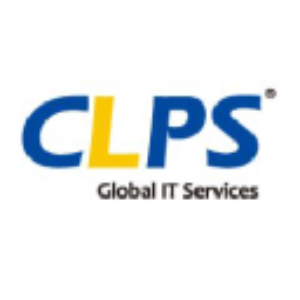From vision to reality: By going beyond agility and core to "0", CLPS facilitates financial institutions' digital transformation and application modernization
On April 21, 2023, CLPS Incorporation participated in the Fintech Forum in Shanghai, where Jingwei Sun, Senior VP, highlighted the transition of financial institutions to digital-native services. He discussed the evolution from IT 1.0 to IT 3.0 and emphasized the importance of adopting agile methodologies and DevSecOps in financial technology. Mr. Sun pointed out the need for financial firms to embrace digital transformation as a competitive strategy, particularly with the rapid development of e-CNY. He noted that building efficient IT teams through outsourcing coupled with self-research is vital for success. CLPS aims to leverage advanced technologies to support financial institutions in creating a robust digital ecosystem.
- Participation in the Fintech Forum enhances visibility in the financial technology space.
- Emphasis on digital transformation aligns with industry trends, potentially increasing demand for CLPS's services.
- Collaboration with a state-owned bank to promote e-CNY strengthens partnerships and market position.
- Concerns about return on investment in digital ecosystems may hinder client commitment.
- Traditional financial institutions may resist adopting new technology due to existing inflexible IT architectures.
Insights
Analyzing...
Fintech is gradually evolving to achieve digitally-native financial services.
Based on the evolution of technology application, the financial IT architecture and technical process are undergoing rapid and agile development in three stages: IT 1.0, IT 2.0 and IT 3.0. IT 1.0, which is implemented in physical architectures such as mainframes and midrange computers, is still prevalent in several traditional financial institutions. However, most of the financial institutions today are running IT 2.0, managing projects and technologies in an agile manner under X86 architecture. At the same time, some of the leading financial firms have adopted IT 3.0 in the form of cloud-native infrastructure and agile DevOps for microservice management.
How far does digital transformation go in the financial industry? Digitalization, according to
The goal of building digital native ecosystem is not simply applying new technology, but adopting well to the particularities of the financial industry and the uniqueness of each institution. Taking the industry's high emphasis on security into consideration, he explained that
A change of mind is the antidote to all difficulties and worries.
Digital natives present a gratifying and attractive image, and financial institutions are eager to capitalize advanced technologies in order to grow and improve their business. On the other hand, they are concerned about the return on investment of digital ecosystem construction, as well as falling into a wait-and-see game towards the industry, which creates many difficulties and concerns for digital advancement.
The lack of IT service providers who are capable of making overall plans causes such hesitations, according to
Despite rapid technological advances, the finance industry does not change much. In this sense, the goal of fintech should not be to technologize traditional financial business but rather take a lead in the tech sector. Mr. Sun suggested that an IT department be changed from a cost-center to a value-center. An effective method to evaluate cutting-edge technologies is to establish a team dedicated to the task. To give financial institutions some flexibility in their choices, he recommended combining outsourcing with self-research to build efficient IT teams.
Core to "0", is it imminent or far off?
The agility and openness of digitally-native financial services enable financial institutions to better cope with market changes and capture opportunities. As the digital economy continues to develop, financial institutions have gradually shifted digital transformation as an alternative to enhance competitiveness to a top priority as a survival strategy.
A good example is the development of digital ecosystem of e-CNY, which is driving forward apace. e-CNY mainly serves small retail business' high-frequency transaction needs as a cryptocurrency. In the future, it is likely that it will be able to connect with retail and corporate banks outside the consumption scenario due to its orientation, recyclability, and traceability, along with more scenarios such as credit, insurance, securities, and agriculture. With e-CNY leaping from M0 and running through M1 and M2 of the money supply, the financial industry will be the focus of this trend, but at the same time, it also makes imperative that the banking system is capable of a high level of concurrency and scenario-based capability in order to subvert traditional ways and even go beyond agility.
As proof, Mr. Sun pointed out that
As financial institutions enter the era of digital finance, IT architecture is also undergoing a dynamic evolution. With the help of cutting-edge technologies such as artificial intelligence, big data, cloud computing, intelligent marketing, blockchain, and Web 3.0,
About
Headquartered in
Forward-Looking Statements
Certain of the statements made in this press release are "forward-looking statements" within the meaning and protections of Section 27A of the Securities Act of 1933, as amended, and Section 21E of the Securities Exchange Act of 1934, as amended. Forward-looking statements include statements with respect to the Company's beliefs, plans, objectives, goals, expectations, anticipations, assumptions, estimates, intentions, and future performance. Known and unknown risks, uncertainties and other factors, which may be beyond the Company's control, may cause the actual results and performance of the Company to be materially different from such forward-looking statements. All such statements attributable to us are expressly qualified in their entirety by this cautionary notice, including, without limitation, those risks and uncertainties related to the Company's expectations of the Company's future growth, performance and results of operations, the Company's ability to capitalize on various commercial, M&A, technology and other related opportunities and initiatives, as well as the risks and uncertainties described in the Company's most recently filed
Contact:
Public Relations Office
Phone: +86-182-2192-5378
Email: lenny.li@clpsglobal.com
SOURCE







